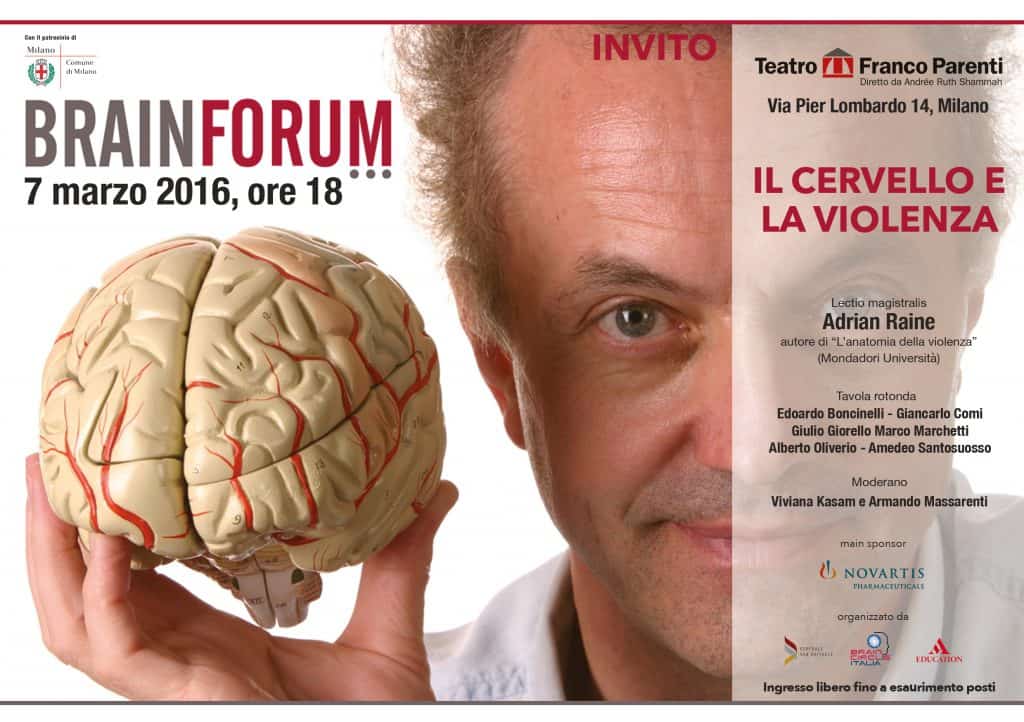
Can violence have biological and genetic bases? Is there a predisposition to crime? How does a person’s genetic makeup interact with social and cultural factors to produce violent behavior?
These are just some of the questions that the 2016 edition of BrainForum THE BRAIN AND VIOLENCE tried to clarify.
In a lectio magistralis the prof. Adrian Raine, psychiatrist and criminologist, Richard Perry Chair at the University of Pennsylvania, one of the most important scholars of criminal neuroscience, illustrated the results of over thirty years of research dedicated to the interaction between genetics and biology in the production of violence.
Studies that have undermined the certainties of the scientific community whose dominant paradigm in understanding criminal behavior, for decades, was built on deterministic social, sociological and psychological models. Adrian Raine has called these beliefs into question and given a new perspective to the theories of the Italian scholar Cesare Lombroso who, over a century ago, was the first to try to persuade public opinion that the origin of crime had biological roots.
The professor. Raine is the author of an essay that appeared in Italy for Mondadori Education, in the Science and Philosophy series directed by Armando Massarenti: The anatomy of violence – The biological roots of crime, which highlights how biological factors, already in the prenatal, can contribute to the formation of particular brain circuits that predispose to violent behavior, and presents numerous evidence that demonstrates how an individual’s genetic makeup plays a decisive role in shaping the tendency to criminality, if psychological, cultural factors intervene already in childhood , nutritional and environmental negatives.







